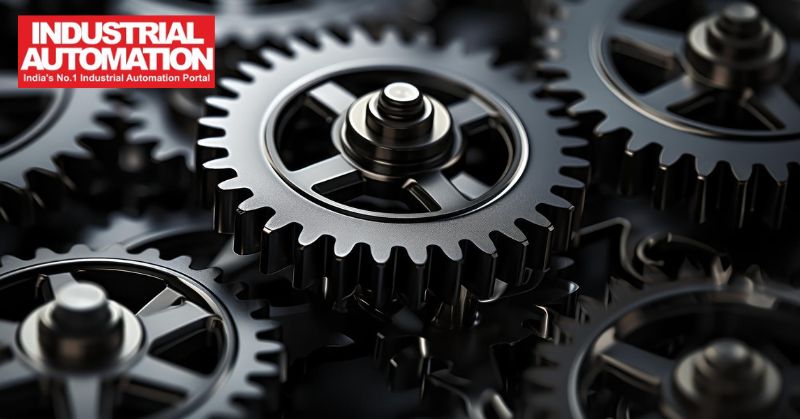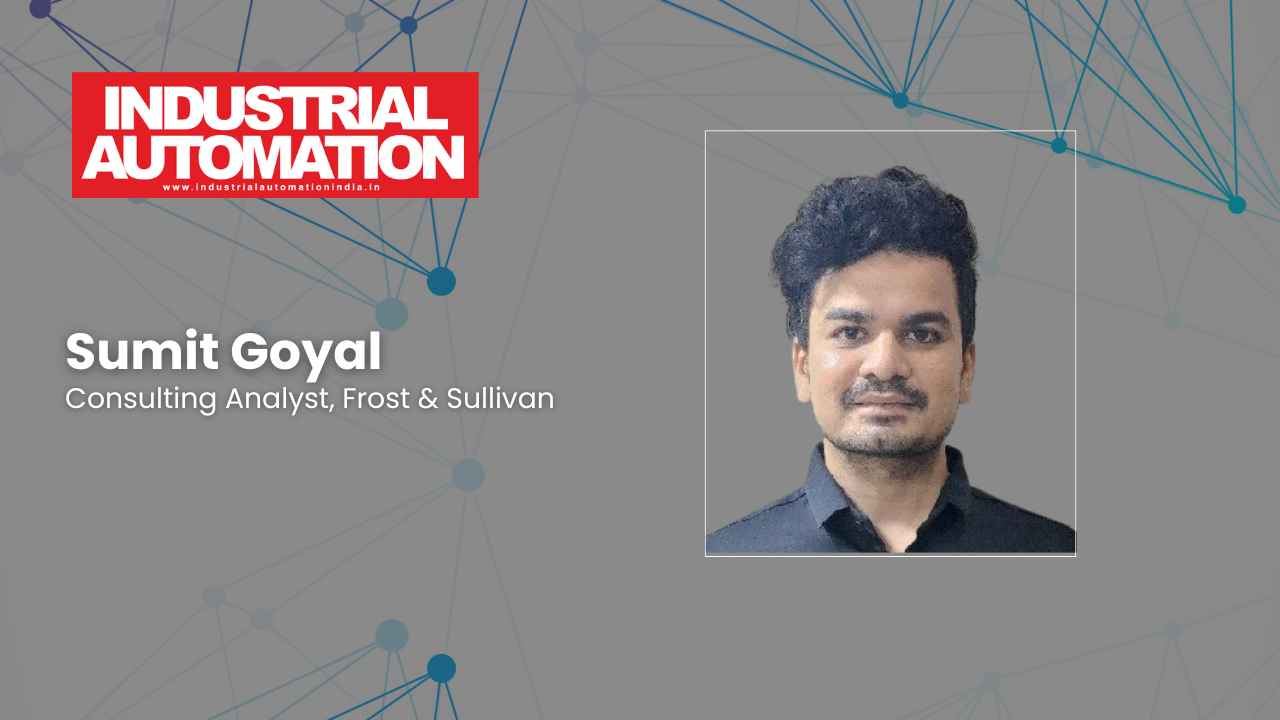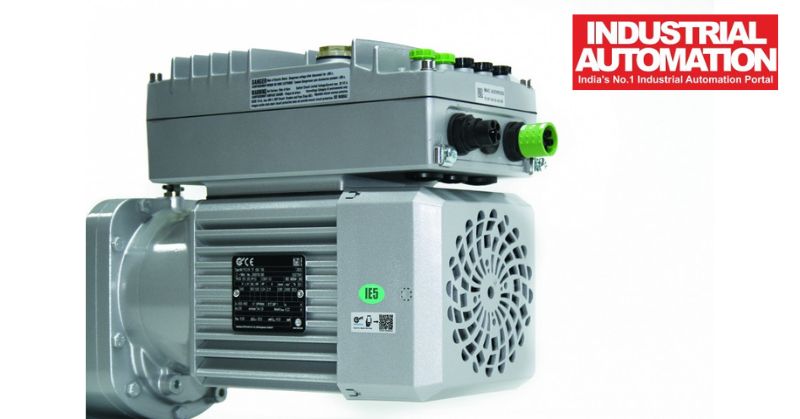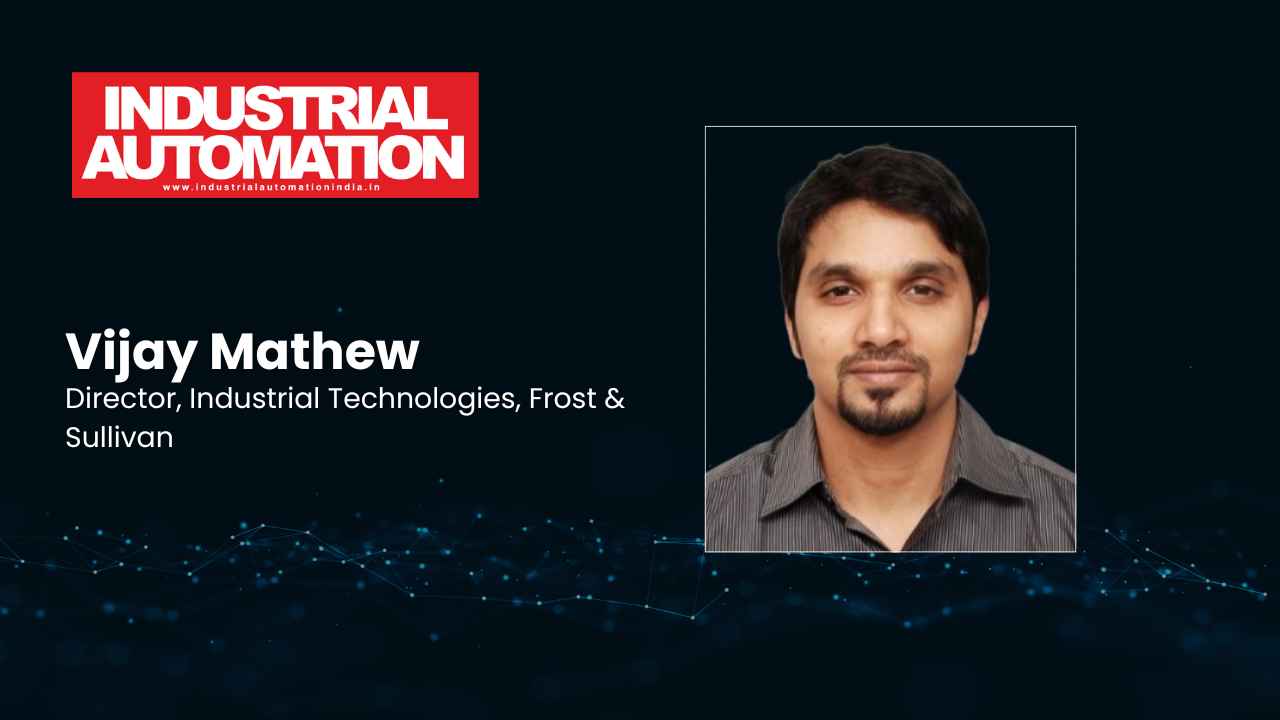
The New Era of Motion Control: Driving Industrial Automation Forward
As industries increasingly embrace digital integration, the importance of motion control systems is rapidly escalating. According to industry experts Vijay Mathew and Sumit Goyal, these systems are evolving from basic components to strategic enablers, crucial for achieving efficiency, flexibility, and precision in modern manufacturing. This article explores the transformative role of motion control technologies and their impact on the future of industrial automation.
![[object Object]](https://admin.industrialautomationindia.in/storage/articles/article-8bLeY53AGnO6ek0JXYy1axkPz2K2bzj6kkkM9nwb.jpg)
As industries become more digitally integrated, the role of motion control systems will only grow in importance, say Vijay Mathew and Sumit Goyal.
Motion control has evolved beyond a fundamental technology – it now serves as a strategic enabler in the pursuit of industrial efficiency, flexibility, and precision. As industrial ecosystems become more interconnected and digitalised, motion control systems form the backbone of automation processes that drive competitive differentiation. Whether in manufacturing lines that require microsecond-level precision or in robotics systems that demand real-time adaptability, motion control underpins the very fabric of advanced industrial operations.
The global motion control market is poised for significant expansion, reflecting its increasing role in shaping the future of industries. Valued at approximately USD 15 billion in 2023, the market is forecasted to grow at a CAGR of 8% to reach USD 25 billion by 2028. This growth is driven by the convergence of AI, IIoT, and machine learning, which enhance the capabilities of motion control systems, making them more intelligent, adaptive, and autonomous.
In this context, the landscape is shifting from merely reducing operational costs to delivering higher-order outcomes like improved agility, zero-defect manufacturing, and predictive intelligence. This article delves into the critical components, evolution, and future trends of motion control systems, while highlighting industries rapidly adopting these advanced systems.

Key segments of motion control: From components to complete solutions
The motion control market is built on several foundational pillars, each playing a critical role in the functioning of complex industrial systems. The segmentation spans across actuators, drives, motors, sensors and feedback devices, and software & services – each component enabling the precision and performance required in today's manufacturing environments.
Motion Controllers are the brains of the motion control system. They are responsible for interpreting input commands and generating the precise signals needed to control motors and other devices to achieve the desired motion. Essentially, motion controllers coordinate the operation of all other components in the system, such as motors, drives, and sensors, ensuring they work in harmony to achieve accurate, synchronised movements.
In more advanced systems, motion controllers are equipped with sophisticated algorithms and real-time processing capabilities, enabling adaptive motion control, precision positioning, and trajectory planning. They are widely used in robotics, CNC machinery, and other high-precision applications. Controllers come in various forms, including standalone devices, PC-based controllers, and embedded controllers, depending on the complexity of the application.
Actuators are the muscle of motion control systems, converting electrical signals into mechanical motion. They range from pneumatic and hydraulic actuators to modern electric actuators, which offer higher precision and lower maintenance. Electric actuators have gained traction in industries requiring fine-tuned control and energy efficiency, such as semiconductor manufacturing and electronics assembly. The move towards electrification, driven by sustainability goals, positions actuators as a key area of innovation, with smart actuators increasingly integrating self-monitoring capabilities.

Drives are responsible for controlling the motion of actuators and motors, ensuring that they operate at the desired speed, torque, and position. Variable frequency drives (VFDs), servo drives, and stepper drives dominate the market, with servo drives seeing substantial growth due to their ability to provide precise control in dynamic environments. The role of drives is expanding beyond simple control to integrating advanced algorithms that allow for real-time adjustments, reducing downtime and improving efficiency in sectors like automotive and aerospace.
Motors form the heart of motion control systems, providing the necessary rotational or linear force. AC motors, DC motors, and more sophisticated servo and stepper motors are integral to applications requiring both power and precision. The rise of high-torque, low-inertia motors, especially in robotics and automated manufacturing lines, has transformed how industries approach speed and accuracy. Emerging trends include the development of compact, energy-efficient motors that reduce heat generation and power consumption, aligning with global sustainability targets.
Sensors and feedback devices serve as the sensory organs of motion control systems, providing critical data on position, speed, and force. They enable closed-loop systems where continuous feedback allows for real-time adjustments, ensuring precision and reliability. Encoders, tachometers, and accelerometers are some of the key technologies used. These devices are seeing rapid innovation, particularly with the integration of smart sensors that not only measure but also communicate actionable insights directly to control systems. Industries like precision electronics, pharmaceuticals, and medical devices rely heavily on such technologies to ensure compliance and minimise defects.
The true intelligence of motion control systems lies in their software. Advanced software platforms allow for programming, simulation, and real-time monitoring of motion control systems. Key areas of development include AI-driven analytics, digital twins, and predictive maintenance tools. The rise of software-defined automation (SDA), which decouples hardware from software, has revolutionised how motion control systems are deployed, making them more flexible, scalable, and adaptable to changing industrial needs. Services such as system integration, custom programming, and maintenance are becoming increasingly critical as industries adopt more complex and integrated systems
The evolution of motion control: From mechanical roots to digital precision
Motion control has undergone transformative changes over the past century. Initially, mechanical systems based on gears, cams, and linkages were the primary means of controlling industrial motion. However, the advent of electrical systems marked a significant shift. Early innovations like the development of DC motors and analog controllers in the mid-20th century allowed for more sophisticated and flexible control of machinery.
The real breakthrough came in the 1970s with the introduction of digital control systems, particularly the programmable logic controller (PLC). This allowed manufacturers to automate more complex tasks and scale their operations with greater reliability. The 1990s witnessed the rise of distributed control systems (DCS), which enabled more granular control over multiple processes in real-time, a leap forward in industries like oil and gas.
Today, motion control is entering a new phase, characterised by the convergence of artificial intelligence, industrial IoT, and edge computing. Systems are becoming increasingly self-regulating, capable of predictive adjustments, and autonomous decision-making. This shift from reactive to proactive motion control marks the beginning of a new era, where factories are more connected, efficient, and responsive to dynamic operational conditions.
Recent Technological Advances Driving Transformation in Motion Control
AI and machine learning integration
Artificial intelligence has emerged as a key enabler of advanced motion control. AI algorithms can process vast datasets in real-time, allowing systems to predict and preempt operational issues before they occur. In manufacturing environments, AI-driven motion control systems continuously adjust machinery to optimise efficiency, reduce energy consumption, and minimise wear and tear. Machine learning is further enhancing these capabilities, allowing systems to learn from past performance and fine-tune operations autonomously.

IIoT and edge computing
The Industrial Internet of Things (IIoT) has brought unprecedented levels of connectivity to motion control systems. By connecting sensors, actuators, and controllers to the cloud or local edge computing systems, motion control systems can now process real-time data streams and make instantaneous decisions. This reduces latency and enhances system responsiveness, making motion control more precise and reliable.
Cobots and robotics
Collaborative robots (cobots) are transforming industries by allowing humans and machines to work side by side. Advanced motion control systems are crucial to the functioning of cobots, which require ultra-precise movements and real-time adaptability to ensure safety and efficiency. This is particularly relevant in industries like logistics, healthcare, and automotive, where flexibility and adaptability are paramount.
5G and ultra-low latency networks
The rollout of 5G technology is poised to revolutionise motion control by enabling ultra-low latency communication. This is especially critical for industries that require instantaneous adjustments, such as autonomous vehicles, high-speed manufacturing, and remote-controlled operations. The enhanced speed and reliability of data transmission will allow for more complex and distributed motion control systems, enhancing overall system performance.
Conclusion: Navigating the future of motion control
As industries become more digitally integrated, the role of motion control systems will only grow in importance. The next generation of motion control solutions will be defined by their intelligence, adaptability, and ability to integrate seamlessly with broader industrial ecosystems. With advancements in AI, IIoT, and 5G, motion control is moving from deterministic, pre-programmed systems to dynamic, learning systems capable of optimising operations in real-time.
The future of industrial automation hinges on the continued evolution of motion control technologies. Companies that invest in these advanced systems today will not only enhance their operational efficiencies but will also position themselves at the forefront of a rapidly transforming industrial landscape.
Vijay Mathew is Director, Industrial Technologies, at Frost & Sullivan. With over 18 years of experience, Vijay is a seasoned advisor known for providing strategic, unbiased, and objective advisory services across a variety of industries. His areas of expertise include automation, process control, industrial sensors and instrumentation, and electronic test and measurement.
Sumit Goyal is Consulting Analyst, Industrial Technologies, at Frost & Sullivan. Sumit is a Mechanical Engineering graduate from Ahmedabad and has completed PGPM from ICFAI Business School with a major in Marketing and minor in Operations. He has a keen interest in Statistics and Data Science, and was earlier a Strategy Consultant at NEC Corporation.
NORD Drivesystems equips its drive components with QR codes

To provide its customers worldwide with quick and easy access to service and sales, NORD DRIVESYSTEMS equips their products with QR codes. The paper-free alternative saves time and resources. Furthermore, this digital service allows for direct contact and competent advice by the suitable contact person.
“Almost all NORD production plants now pair our drive components with a QR code,” says Jörg Niermann, Marketing Manager. “Only Brazil is still on its way. With this, all important information is immediately and digitally available.” By using the QR codes, NORD customers worldwide reach their direct contact persons in their respective country organisations. The consultants speak their mother tongue and all data on the particular drive solution is directly displayed on their screen. In case of contact by telephone, the serial number of the drive component must still be provided.
“By scanning the QR code with their mobile phone, customers enter the “Digital Services” selection menu and, apart from direct contact to our service department, get further options,” Niermann adds. For example, with the serial number of their drive components, they can navigate to the drive-specific documentation and gain access to more life cycle services and information on latest products or firmware. “The paper-free and correct drive identification and documentation saves resources. Upon customer request or for your ATEX products, we will of course continue to send the documents.”
The digital service furthermore provides the customer with a list of potential spare parts for their individual drive solution. They cannot only contact their responsible technical support or sales department but also gain direct access to the myNORD customer portal. The drive component’s serial number will always be pre-set and all further actions are linked to it. The parameter data is stored via the NORDCON APP with NORDAC ACCESS BT.
For the future, the company plans to further expand the digital service and to inform on updates, for example for its frequency inverters.
______________________________________________________________________________________________
For a deeper dive into the dynamic world of Industrial Automation and Robotic Process Automation (RPA), explore our comprehensive collection of articles and news covering cutting-edge technologies, robotics, PLC programming, SCADA systems, and the latest advancements in the Industrial Automation realm. Uncover valuable insights and stay abreast of industry trends by delving into the rest of our articles on Industrial Automation and RPA at www.industrialautomationindia.in